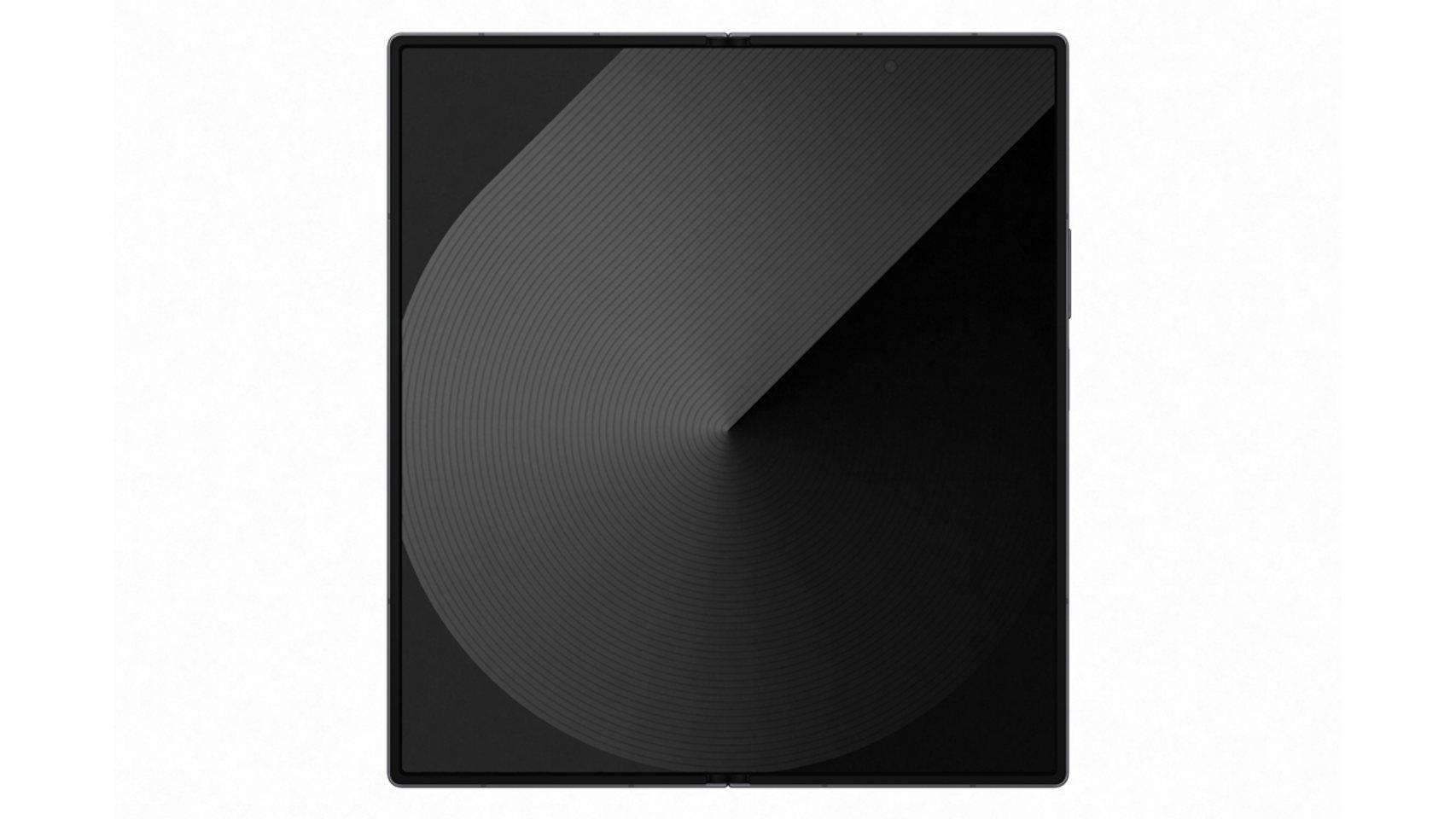Samsung is in the process of extending the latest version of its software layer, based on Android 12. And we have already been able to test it: after installing One UI 4 in our Samsung Galaxy Note 20 Ultra we tell you what are the biggest changes introduced by the update.
Android 12 might not be entirely new since this version of the operating system has officially been with us since October (along with the Google Pixel 6), but, as it often happens in our operating system for phones, The start of the following year marks the biggest projection of updates.. And Samsung does not generally miss this springboard: its catalog is in full swing. First for the most expensive and the most recent, it is also a tailor-made.
How to officially update Samsung Galaxy to Android 12 and One UI 4

First of all: explain how to renew the phone software, as we did with our personal mobile. After releasing the update in South Korea and expanding to countries where Samsung has beta tested, One UI 4 is now reaching various Samsung Galaxy, such as the Spanish Note 20.
The update process is usual: you only need a good internet connection (WiFi preferably, the update weighs about 2.5 GB) and follow the next steps.
- It is likely that your mobile will display a notice in the notification area informing you that the update has arrived. In this case, click here and follow the instructions.
- If you don’t have a notification, go to your Samsung Galaxy settings and type “Software update“.
- And one “Download and install“: your mobile should warn you that it has an update pending. Otherwise, you must wait.
- Click on “Update now“and wait for the process to complete. It takes about ten minutes.

- You can also update by connecting your Samsung to the computer. For this you need to install Samsung Smart Switch (Android and macOS). Once installed, connect the mobile to the computer via USB and open Smart Switch. It will automatically check for updates and ask you to install them.
The update process takes a few minutes: the new software consists of updating the layer, the Android itself as well as the applications installed on the phone. After the process, the Samsung Galaxy will be about to make some candy. This, yes, cosmetic changes are not noticeable: One UI 4 inherits the design of One UI 3 with no visible variations at first glance. The material is included.
What are the main changes of One UI 4 with Android 12? Let’s go through them.
Material Theming: automatic color adjustment based on wallpaper

The aesthetic does not vary significantly, but it is appreciated in most of the elements, as well in the menus as in the cards and the animations. Samsung has further rounded the corners, offers a more refined color palette and there is a greater agreement between the system and Samsung’s own applications.
One of the most eye-catching changes is the implementation of Material You, as well as Material Theming, in One UI 4. As in our Google Pixel 6, the Samsung Galaxy now adapt the tones of menus and compatible applications to the colors of the wallpaper. This is especially true for quick settings and device settings.
More privacy

Google attaches particular importance to confidentiality with Android 12, this is one of the points that manufacturers notably transfer in their updates. Samsung is no stranger to One UI 4.
The changes introduced in terms of confidentiality are as follows:
- Authorization usage list with history by applications.
- Access authorizations to the camera and to the disconnectable microphones.
- Clipboard access warning (it must be enabled, it is disabled by default).
- Approximate location. One UI 4 allows you to restrict location to an approximation to trick apps into believing they’re getting the exact location.
Redesign of the widget section

Samsung adopts the native Android 12 widget selector to improve the visibility of all floating items on the desktop without having to add them manually. In addition, tweaked its own widgets to fit Material You: more rounded corners and more minimalist design.
More features for lock screen

Samsung allows you to add widgets on the lock screen, but not on the desktop: it is possible anchor different system functions. The media player, the weather forecast, the voice recorder or digital health. All of these widgets can be activated and deactivated from the system settings.
Another important novelty is that Samsung allows you to change the audio source directly on the lock screen. Inside the player appears the button “Multimedia output”. By pressing it, you can choose to output the sound from the phone speaker, Bluetooth headphones or connected TV, for example.
Camera app redesign and video improvements

All Samsung apps get a facelift with One UI 4. This also applies to the Camera app: it simplifies its interface to hide the advanced and fun modes; while optimizing scene detection to jump only when needed.
Among the most notable changes are:
- The zoom level is reduced in the main interface. When changing lenses, the app displays the zoom guide with direct jumps to the main levels.
- The video starts recording as soon as you press the record button (instead of releasing it). Samsung streamlines the professional video interface and lets you record video from still mode with a long press of the shutter button.
- Five more seconds for unique shots.
- Portrait mode is now more effective at detecting pets and applying bokeh in the background.
- Better scan documents with more options to share results.
Smarter gallery and better media editor

Following the thread of major changes in One UI 4 apps, Samsung’s media gallery takes a leap forward with Android 12: Samsung improves smart gallery functionality including more options for stories and also for albums (new map view, videos created automatically …).

New Remastering the gallery image applies automatic enhancements ranging from increased resolution to improved brightness and sharpness. It can be selected from the context menu that appears in each photograph.
The video and photo editor included in the Gallery allows undo content changes even after saving the edited files. Additionally, Samsung includes video collages, lighting control, automatic stories after content selection, and image merge.
Mobile status at a glance

With One UI, Samsung introduced an Emoji to indicate the status of the phone from the maintenance screen. Said Emoji reflects how the Samsung Galaxy works in terms of autonomy, safety and available space; with the relevant data on this same screen.
To access each section, just click on its section: One UI 4 displays possible battery and security risks in the foreground; as well as other important sections, such as the latest software update and the direct access to the diagnostics of smartphone components (included in Samsung members).
More accessibility tools

Android 12 tries to improve the use of the smartphone among people who have more difficulty in such use. And Samsung is addressing this accessibility by including new options, such as improved shine reduction (“Extra faded”). That the screen disturbs even the minimum brightness? Well, One Ui 4 lets you shrink it even more from accessibility tools.
Samsung includes a floating ball that can be activated for easier access to configured accessibility tools. It also improves the visibility of the screen, the magnification using the magnifying glass, the screen can launch a “flash” when the mobile receives notifications and the mouse gestures are improved.
Other new features in One UI 4
- Improved dark mode. One UI 4 dims backgrounds when dark mode is on, as well as icons. And illustrations for all Samsung apps have a dark version.
- Improved security and emergency menu. Thanks to Android 12, the new emergency menu, present in the settings, allows you to control the behavior of the phone in situations at risk for the user.
- Alarms can be bypassed once to stop sounding until the next programming.
- Samsung is renewing its keyboard, Health app, Bixby routines, web browser, calendar and share menu.
- Digital health driving instructor. By activating this monitor, the mobile records which apps have been used while driving and how much the phone has been used.
- Always on screen can be activated so that it only lights up with notifications, like a Ambient display more completed. Samsung is also adding more customization options with new stickers Lively.
Table of Contents










